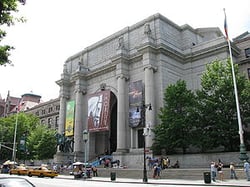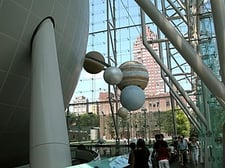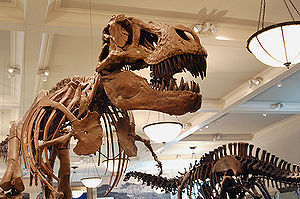Museum of Natural History: Must-See NYC Museum
The American Museum of Natural History, located in New York City, is arguably the most illustrious museum in the world. The Museum defines their mission as being “to discover, interpret, and disseminate information about human cultures, the natural world, and the universe through a wide-ranging program of scientific research, education, and exhibition.” With such an inclusive goal, it is no surprise that the Museum of Natural History houses forty-five permanent exhibitions in twenty-seven interconnected buildings.
Long Prestigious History
The Museum of Natural History’s own history can be traced back to 1869, when Albert Smith Bickmore succeeded with his proposal to create a museum dedicated to natural history in New York City, garnering support from such influential men as Theodore Roosevelt, Sr., J. Pierpont Morgan, William E. Dodge, Jr., and others. It was New York’s Govenor at the time, John Thompson Hoffman, who signed the Act of Incorporation in the spring of 1869 to officially create the Museum of Natural History.
Since the museum’s first building opening in 1877, the museum has become a special place for historians and scientists alike while also serving as a point of pride for Americans and New Yorkers.
Famous Permanent Exhibitions
What makes the museum so special, in addition to its long history, are its incredible exhibition halls. The new and improved Hayden Planetarium, which is a part of the Rose Center for Earth and Space, offers a high resolution fulldome video projection of incredible space shows.
The Akeley Hall Of African Mammals features renowned dioramas that define the art of these models. Of course, the memorable blue whale room in the Milstein Hall of Ocean Life features a 94 foot long model of a blue whale that is suspended from the ceiling. And, of course, many people are blown away by the incredible dinosaur fossil collection the Museum of Natural History boasts; from the incredible full Tyrannosaurus rex display, composed of two dinosaurs discovered in Montana in the early 1900s, to the Anatonian fossil skeletons, there are so many fossils in the museum’s collection that many of these displays are not even open to the public.
World Class Research
In addition to the incredible historically important and new exhibitions alike, the American Museum of Natural History is also involved in numerous research projects. The Museum employs more than 200 scientists and is directly involved in sponsoring over 100 research expeditions yearly. Primarily paleontological in nature, this research has lead directly to the museum’s displays, various publications is scholarly journals, and exploration of regions perviously un- or under-visited, such as the Bering Strait and Brazillian Amazon, to name only a few.
Ultimately, the research and exhibitions of the American Museum of Natural History have contributed to a level of understanding of our natural histories that has permeated our hearts, our minds, and our culture. Firmly ingrained in our memories, the Museum of Natural History provides a window into what our world was like and what our world is like in the places and corners of the earth that we may never visit- no small feat for a museum planted firmly in the heart of the City That Never Sleeps.










